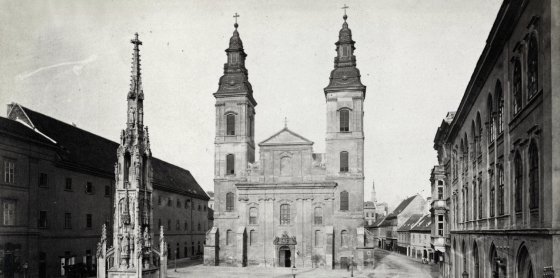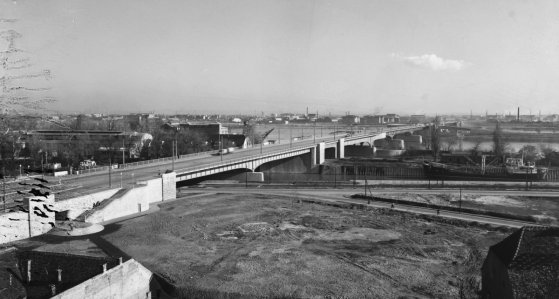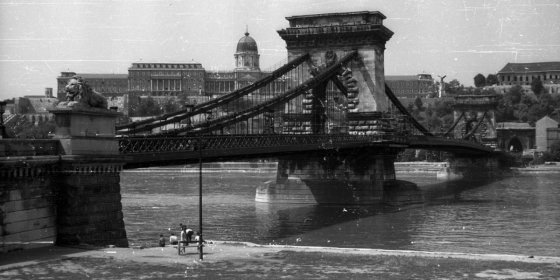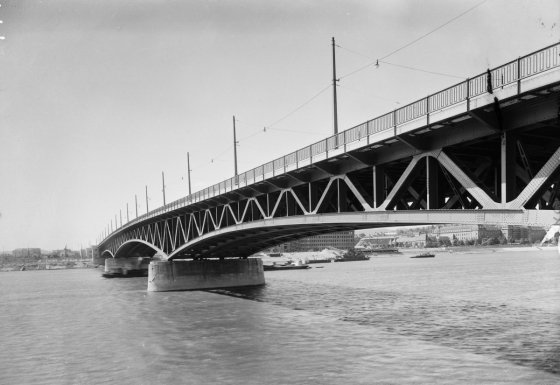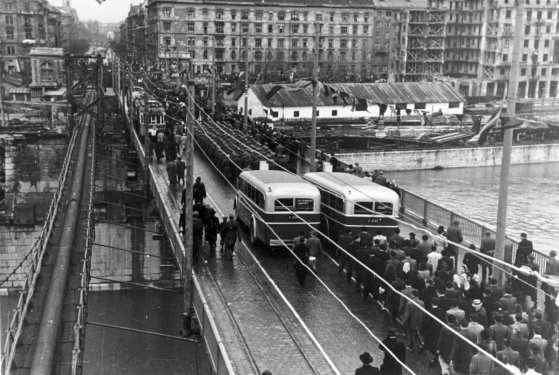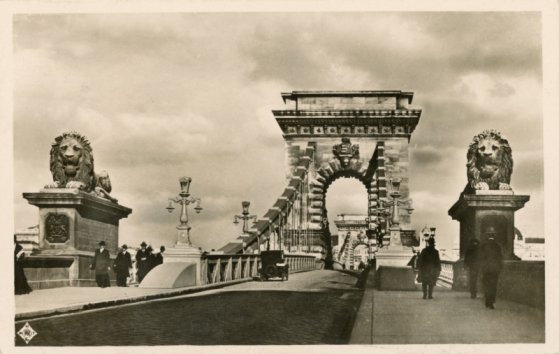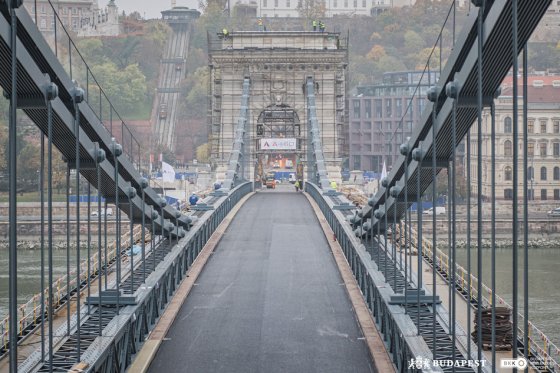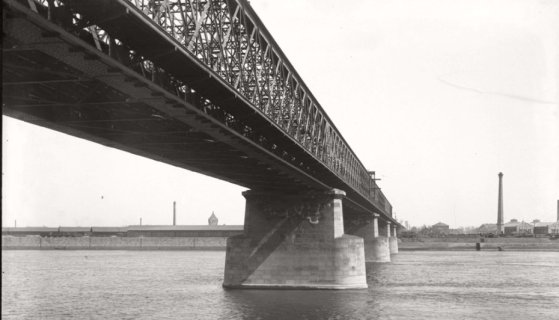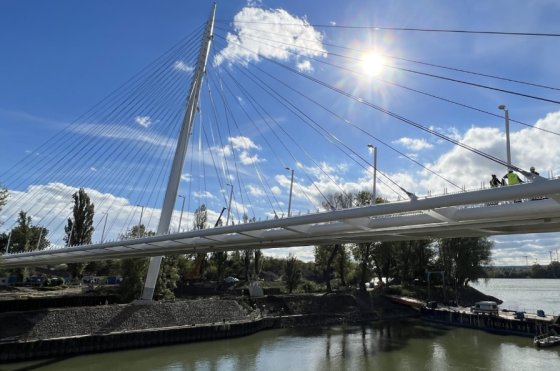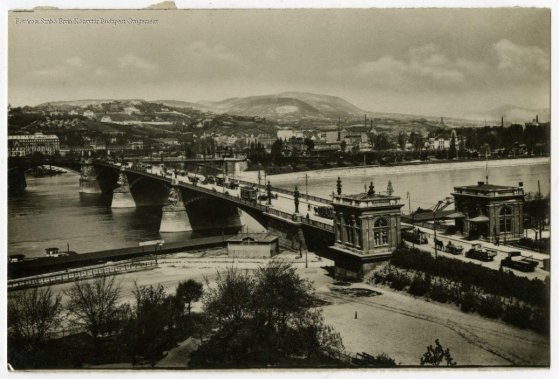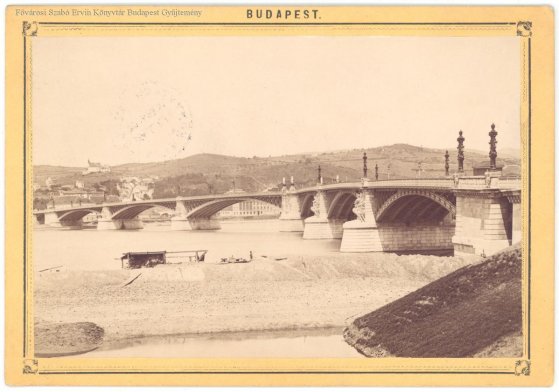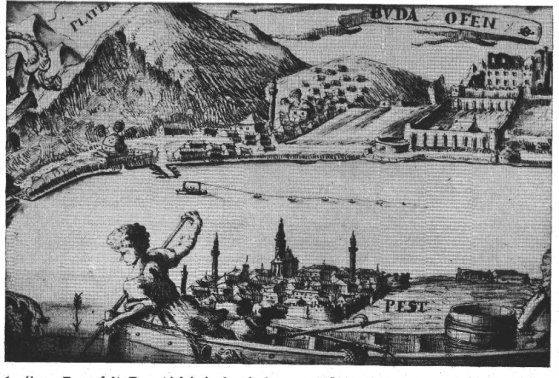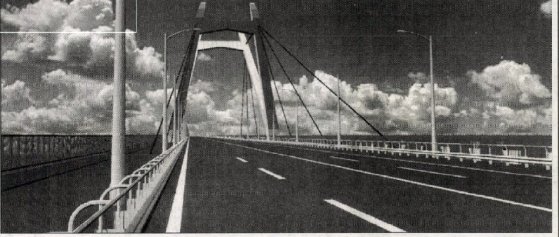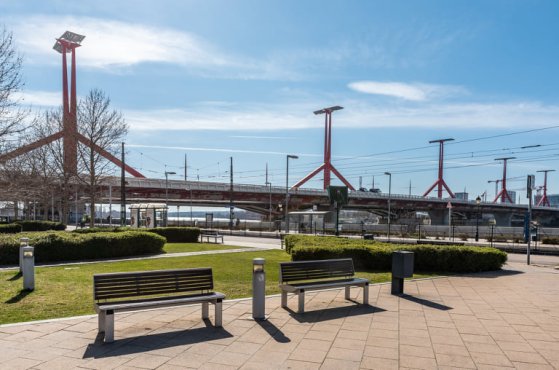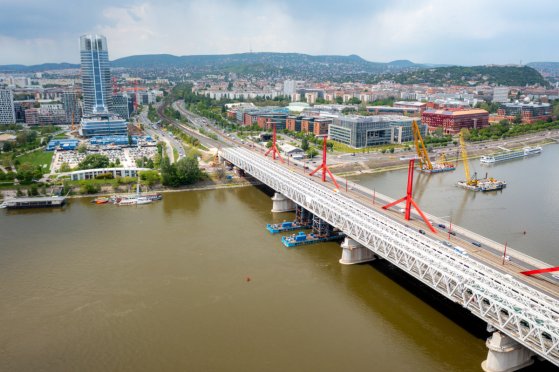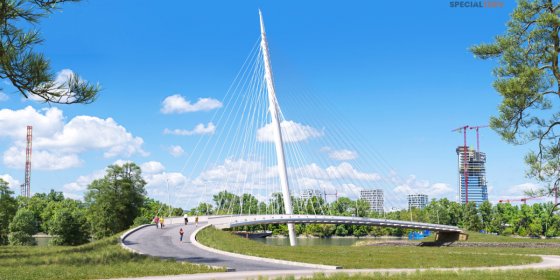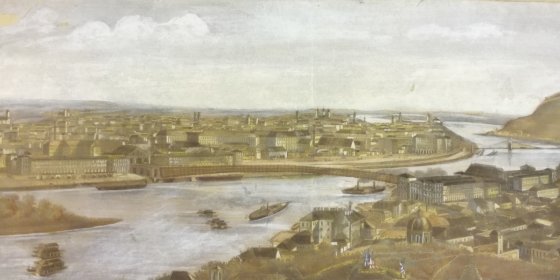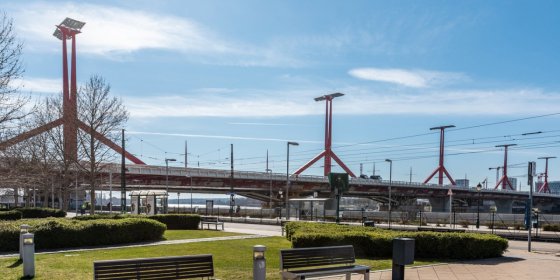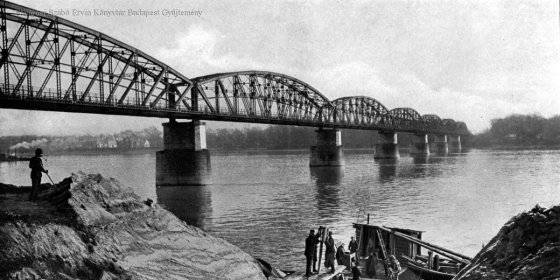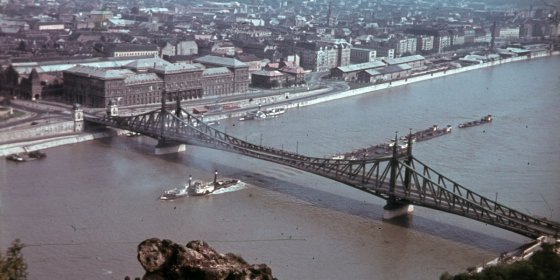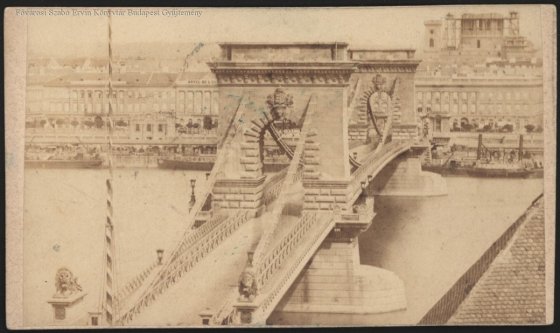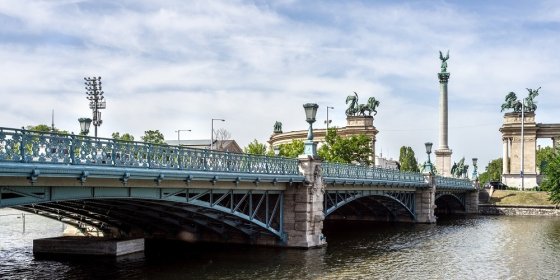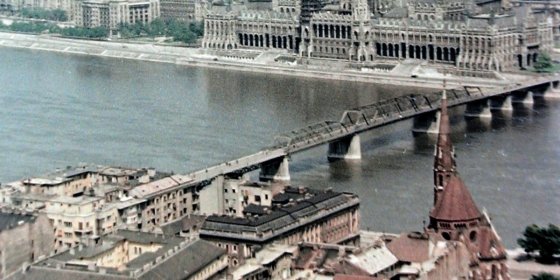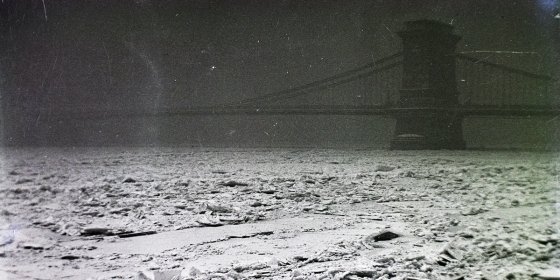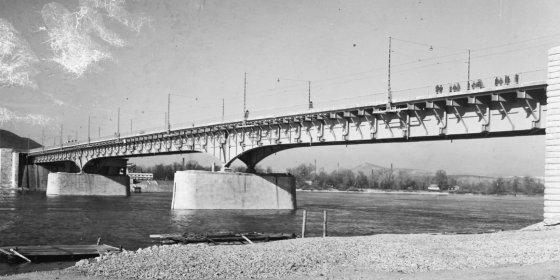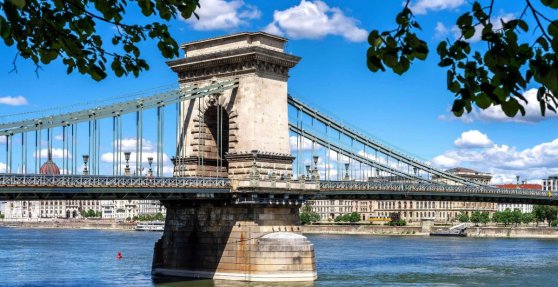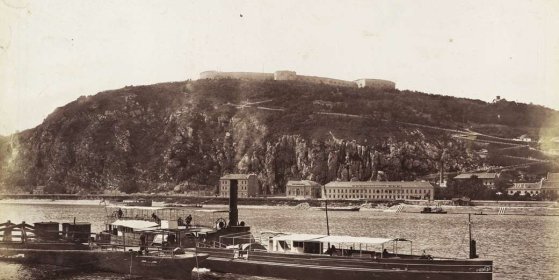 The „intertwined history” of the bridges and the city of Budapest
Which ideas and events have shaped the fate of bridges of Budapest and the cityscape? Alongside many other interesting facts, this question is also answered this newly published book by the Budapest City Archives, which introduces the history of bridges in Budapest.
The „intertwined history” of the bridges and the city of Budapest
Which ideas and events have shaped the fate of bridges of Budapest and the cityscape? Alongside many other interesting facts, this question is also answered this newly published book by the Budapest City Archives, which introduces the history of bridges in Budapest.
bridge
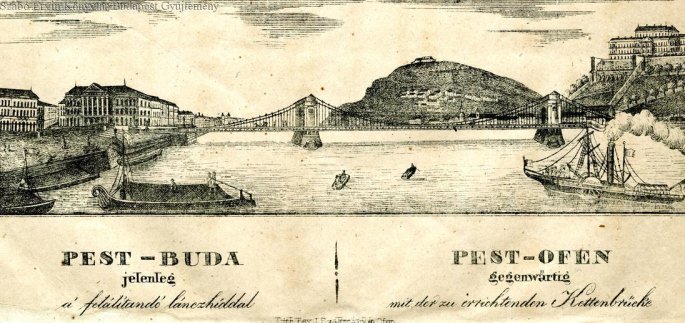 The Bridge Report, which brought a turning point in the history of Budapest
The Bridge Report, which brought a turning point in the history of Budapest
March 31, 2023 at 3:00 PM
A travel report that changed the history of Pest and Buda, as well as Hungary. The little book contributed to the change of half a thousand years of legal customs and the implementation of an investment of unprecedented size and technical quality. This book was The Bridge Report [Hídjelentés in Hungarian].
Tunnels instead of bridges? – An unrealised plan from the 19th century to connect Pest and Buda
March 11, 2023 at 2:30 PM
The plan to build road tunnels under the Danube instead of bridges was seriously considered in Budapest already 130 years ago. Proponents argued that tunnels were cheaper, more sustainable and less militarily vulnerable. This idea was on the agenda for years, but the tunnels were not built in the end.
The competition of the bridges was decided at a meeting
March 10, 2023 at 11:00 AM
Should the Árpád or the Petőfi Bridge be built first? This was the dilemma that preoccupied the rebuilders of the bridges in Budapest in 1948. The question was not new, the same decision had to be made once 20 years earlier. At that time, the bridge at Boráros Square "won", but after the destruction of World War II, the question was again whether to continue the work with the blown-up bridge at Boráros Square or the half-finished Árpád Bridge.
The Chain Bridge was closed 50 years ago as well
February 16, 2023 at 1:30 PM
The Chain Bridge was closed 50 years ago as well, as after its reconstruction in 1949, it needed to be renovated again. The works were timed for the 100th anniversary of the unification of Pest, Buda and Óbuda. The old painting had to be removed from a surface of 73,000 square metres, but at that time the 1949 coat of arms was also replaced with the version current in 1973.
The rebuilt Petőfi Bridge was handed over 70 years ago
November 23, 2022 at 11:00 AM
When the predecessor of today's Petőfi Bridge was completed in 1937, there was hardly any traffic on it, as the Buda side was largely undeveloped. It was only given a short time as it was destroyed eight years later along with the other Danube crossings in Budapest. When the reconstruction of the bridges began, it was preceded by the restoration of several crossings, then it was finally handed over only in 1952. The new structure was three metres wider, and it also had a bicycle track, which was also important at the time because many people used it to go to work since cars were not allowed for private use.
The exploded Margit Bridge: the half-reconstructed crossing was handed over 75 years ago
November 19, 2022 at 11:00 AM
The elegant arches of Margit Bridge are one of Budapest's jewels. This graceful and beautiful structure was also destroyed by the Germans in World War II. The bridge was rebuilt in two parts, the southern side was handed over 75 years ago: it was open to the public from 16 November 1947.
Wooden blocks, small stone blocks, asphalt - All about the roads of the Chain Bridge
November 15, 2022 at 10:00 AM
The asphalt track of the Chain Bridge has been completed in the past few days, and the load testing has already been carried out. This is the umpteenth roadway of the bridge, and it has probably changed the most in the last nearly 175 years.
The asphalting of the Chain Bridge has been completed - the load testing can be started
November 9, 2022 at 9:00 PM
The asphalting of the Chain Bridge, which is under renovation, was completed in a single day, on Wednesday, 9 November. The coating system for the edge of the roadway will be created after this, and the painting of the road markings remains to be done. The load testing of the Chain Bridge will take place on Saturday, 12 November, 24 20-tonne trucks will arrive at the site.
Trains have been able to cross between Pest and Buda for 145 years
October 24, 2022 at 12:30 PM
The most important Hungarian railway bridge was handed over on 23 October 1877 on the southern border of Budapest at the time. It served railway traffic for only 36 years. The construction of the original structure was accompanied by many disputes, and several lawsuits were started after the investment was completed.
The footbridge connecting Csepel to Pest is structurally ready
October 13, 2022 at 5:30 PM
The Robinson Bridge, which connects Csepel with the Pest side, starting from the Ferencváros athletics stadium, is already structure-ready.
It was handed over 85 years ago, but the widened Margit Bridge exploded 7 years later
October 1, 2022 at 11:30 AM
Margit Bridge was completed as a real luxury investment in the 1870s, under the direction of a French engineer. But traffic at Budapest's second Danube crossing remained very low until the end of the century. However, at the beginning of the 1930s, it already proved to be narrow, so it was decided to rebuild and widen it. The inauguration was held 85 years ago, on 1 October 1937.
The construction of the Margaret Bridge began before the city unification - piling began 150 years ago
August 1, 2022 at 9:00 AM
The Margaret Bridge was the second bridge between Pest and Buda, the construction of which began 150 years ago, on 1 August 1872, even before the unification of the city. Many people criticized the designated location, but the government decided that the new Danube crossing should connect to the planned Outer Ring Road and through it to the Sugárút [Avenue]. The bridge was designed by a French engineer and built by the French company he founded, and was completed in four years.
The reaction ferry between Pest and Buda ceased to exist 255 years ago - The current of the river operated the special ferry
July 14, 2022 at 10:30 AM
The first post-Turkish bridge was built between Buda and Pest 255 years ago, but until then, people still had to cross the river somehow. This was made possible by a very interesting structure called the reaction ferry. It was operated by the flow of the river, and it solved the crossing of the Danube in the line of today's Erzsébet Bridge and then the Chain Bridge until 1767.
Can the Aquincum Bridge be car-free? - Only after the construction of the next section of the M0 will there be a new Danube bridge between Óbuda and Újpest
May 21, 2022 at 1:00 PM
Once again, the issue of the Aquincum Bridge is on the agenda, and the capital is asking the public for their opinion on what the new Danube crossing should look like and between which areas should it create transport connections. Although its construction is not expected in the near future, as it is conditional on the construction of the section of the M0 motorway between roads 10 and 11, and it is also preceded by the Galvani Bridge, but a suggestion has already been debated: alternatives include a plan of a car-free bridge.
Plans were already made for today's Rákóczi Bridge 50 years ago
May 15, 2022 at 9:00 AM
A bridge was designed in the 1970s to replace the former Lágymányosi, now Rákóczi Bridge, and a tender was also announced for the task. The winning plan would have been a concrete bridge, but ideas later changed about both the structure and the role of the bridge, so it was finally built only decades later, in a completely different form. The results of the first competition were presented to the general public 50 years ago, in May 1972.
The last element of the Southern Connecting Railway Bridge was replaced
May 6, 2022 at 5:30 PM
The third structure of the new connecting railway bridge is now passable, as its last piece has been replaced. The rail and other works will then be carried out and the trial load is expected to take place in early August. This marked another milestone in the development of the Southern Circuit, which aims to increase the utilization of suburban trains, thereby reducing car traffic in the capital.
The newest bridge in Budapest - An arched footbridge will connect Csepel with Pest
March 6, 2022 at 9:00 AM
The special pedestrian bridge is already under construction in Budapest, which, starting from the athletic stadium of the 9th District, will finally connect the Csepel Island peak to the city's circulation. The structure will connect the island with the Pest side with an arched road, and its recently erected pylon reaches a height of 65 metres.
The connection between Nyugati and Déli Railway Stations was also planned in the 19th century - now it is made underground
February 22, 2022 at 9:00 AM
In recent years, the idea has emerged to connect the Déli and Nyugati Railway Stations with a tunnel. The plan of the Budapest Development Centre is now one step closer to implementation, as a contract has been signed for the preparation of an environmental impact assessment of the connecting railway tunnel to be built under the Danube. The idea of connecting the Déli [Southern] and Nyugati [Western] Railway Stations, which are relatively close to each other, is not a new idea. It arose almost immediately after the opening of the Déli Railway Station in 1861, although an overground connection was still imagined at the time.
The government decided to build the Lágymányosi Bridge 30 years ago
February 20, 2022 at 9:00 AM
The government decided on today's Rákóczi Bridge, which for a long time was the youngest Danube bridge in Budapest, exactly 30 years ago, on 20 February 1992. A bridge was planned here as early as the 1960s, so the decision ended a very long, three-decade process. Construction of the bridge could then begin, which was completed in 1995, but the originally planned tram only crossed it in 2015.
A forgotten enormous railway bridge - Built for the Millennium, destroyed by war
November 7, 2021 at 10:30 AM
The Újpest Railway Bridge is a stepchild among the bridges in Budapest because it does not even have a regular name. There is almost no mention of it, even though trains have been running here for 125 years, and it plays an important role in traffic around Budapest. Pestbuda now remembers the birth of the first structure, which was built in 1896 for the millennium but was destroyed in World War II.
It was rebuilt, but its decoration and name were changed - the Liberty Bridge was handed over 75 years ago
August 23, 2021 at 9:30 AM
At the end of the spectacular fireworks held in Budapest on the occasion of the founding of the state, glowing Greek fires were started on the bridges, including the Liberty Bridge. At that moment, surely few thought it was the first bridge to be rebuilt after the devastation of World War II and handed over to traffic on 20 August 1946.
Neither Pest nor Buda wanted a private company to build the first bridge in Budapest – the bridge law is 185 years old
May 4, 2021 at 9:00 AM
A law promulgated 185 years ago made it possible to build the first permanent Danube bridge connecting Buda and Pest. A long debate preceded the adoption of the bridge law because neither Pest nor Buda supported a private company building the bridge, as they did not want to waive their customs rights.
Second life for the bridges of Budapest?
April 30, 2021 at 9:00 AM
Recently, an announcement was published about reusing the pieces of the soon-to-be-demolished Southern Railway Bridge in Budapest for other, smaller bridges, such as connections to Hajógyári Island. At first glance, it sounds like a rather strange idea to create a new bridge from a used one, but it is not uncommon at all, even in Budapest. There are several bridges in the capital, the elements of which were once parts of other structures.
The eight-month miracle – Kossuth Bridge completed from scraps 75 years ago
January 10, 2021 at 12:00 PM
Previous articles on PestBuda have detailed how the retreating German forces destroyed all Danube bridges in Budapest. After the war, a series of temporary structures were erected to connect the battle-torn city’s two halves. However, it was obvious that a somewhat permanent structure would be needed. The result was Kossuth Bridge.
A funeral gave life to the bridge that created Budapest
January 7, 2021 at 9:00 AM
Two hundred years ago, a younger Hungarian hussar officer made a rather reckless statement to a friend. His words had many consequences and changed the lives of many forever. The officer, in fact, was only in a hurry to reach his father's funeral.
Once known as Stalin Bridge, Árpád Bridge turns 70
November 9, 2020 at 9:00 AM
Its construction was abandoned during the Second World War. It bore Stalin's name for six years and was the longest bridge in the country for years. Árpád Bridge is now seventy years old.
A bridge without a name – How Chainbridge in Budapest had no name
October 7, 2020 at 11:00 AM
Chain Bridge in Budapest had no official name until 1915 and is still known simply as Chain Bridge in everyday use. However, Lajos Kossuth proposed in 1842 at the laying of its foundation stone that the bridge be named after his great political rival, István Széchenyi, the aristocrat who initiated the construction. Others hoped to name the first permanent crossing between Buda and Pest after princes and princesses. Still, the Ministry of Finance that owned the bridge accepted none of these recommendations. Finally, Széchenyi's name was carved into the structure in 1915, when it was fully rebuilt during the First World War.
From Pest to Gellért Hill by funicular
July 16, 2020 at 3:00 PM
Reaching Buda from Pest downtown at the end of the 19th century was not easy. Climbing to the top of Gellért Hill had similar issues. These two problems would have been solved by the truly spectacular idea of János Ruppenthal, i.e., building a bridge and a funicular.
More articles
 The „intertwined history” of the bridges and the city of Budapest
Which ideas and events have shaped the fate of bridges of Budapest and the cityscape? Alongside many other interesting facts, this question is also answered this newly published book by the Budapest City Archives, which introduces the history of bridges in Budapest.
The „intertwined history” of the bridges and the city of Budapest
Which ideas and events have shaped the fate of bridges of Budapest and the cityscape? Alongside many other interesting facts, this question is also answered this newly published book by the Budapest City Archives, which introduces the history of bridges in Budapest.
 Drama on the university wall - The heroic monument was planned 95 years ago
In the constant hustle and bustle of the Egyetem Square in Pest, the students may not even notice the monument that decorates the short section of wall between the church and the central building of ELTE. However, it commemorates their predecessors, the heroes who fought for their country in World War I, and those who heroically helped them. The first design of the dramatically collapsing soldier was born in 1928, ninety-five years ago.
Drama on the university wall - The heroic monument was planned 95 years ago
In the constant hustle and bustle of the Egyetem Square in Pest, the students may not even notice the monument that decorates the short section of wall between the church and the central building of ELTE. However, it commemorates their predecessors, the heroes who fought for their country in World War I, and those who heroically helped them. The first design of the dramatically collapsing soldier was born in 1928, ninety-five years ago.
 A message from the former school: An exhibition in memory of János Neumann was opened at the Fasori Secondary School
An exhibition was opened in János Neumann's former school, the Fasori Lutheran Secondary School, on the occasion of the 120th anniversary of the world-famous mathematician's birth. In the exhibition presenting the former Neumann milieu, paintings, graphics, photos, furniture, and objects tell the story of the art-supporting spirit of the noble bourgeois family at the turn of the century.
A message from the former school: An exhibition in memory of János Neumann was opened at the Fasori Secondary School
An exhibition was opened in János Neumann's former school, the Fasori Lutheran Secondary School, on the occasion of the 120th anniversary of the world-famous mathematician's birth. In the exhibition presenting the former Neumann milieu, paintings, graphics, photos, furniture, and objects tell the story of the art-supporting spirit of the noble bourgeois family at the turn of the century.

